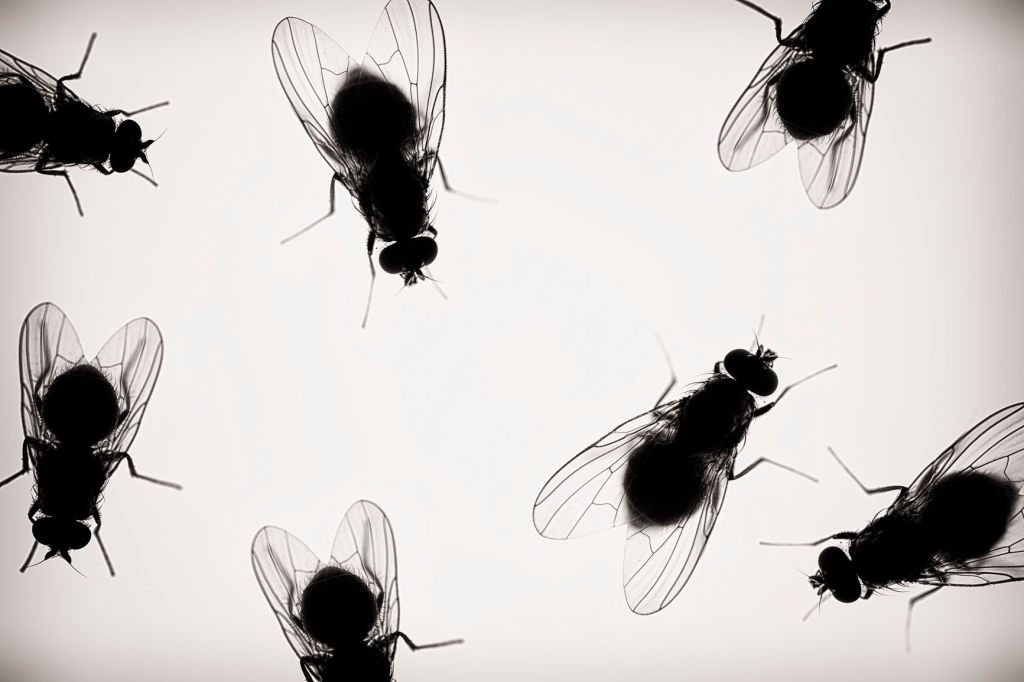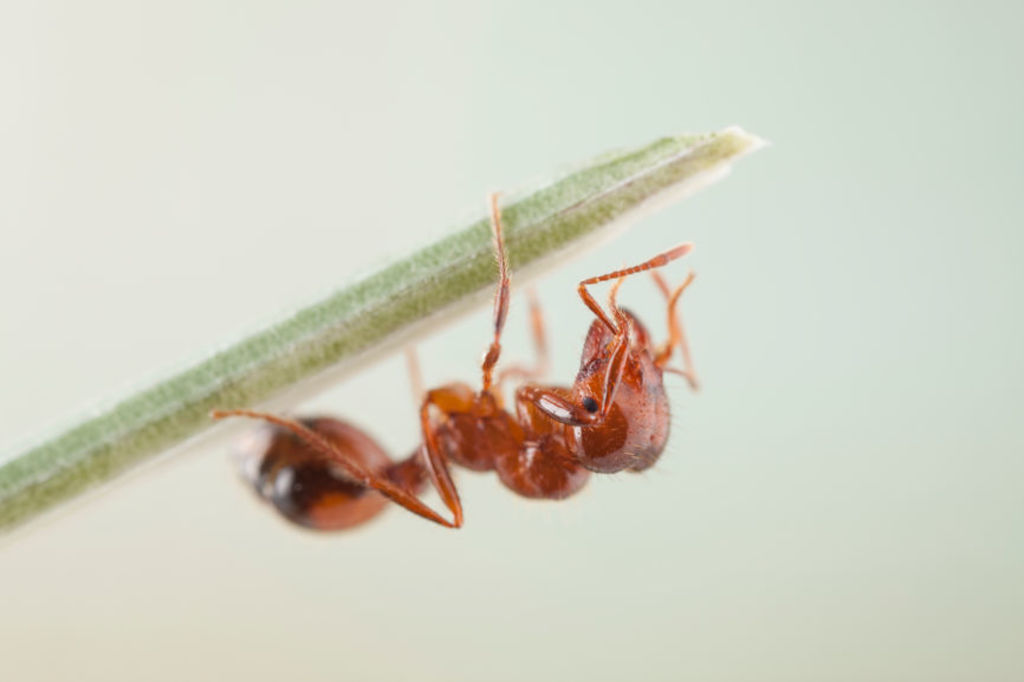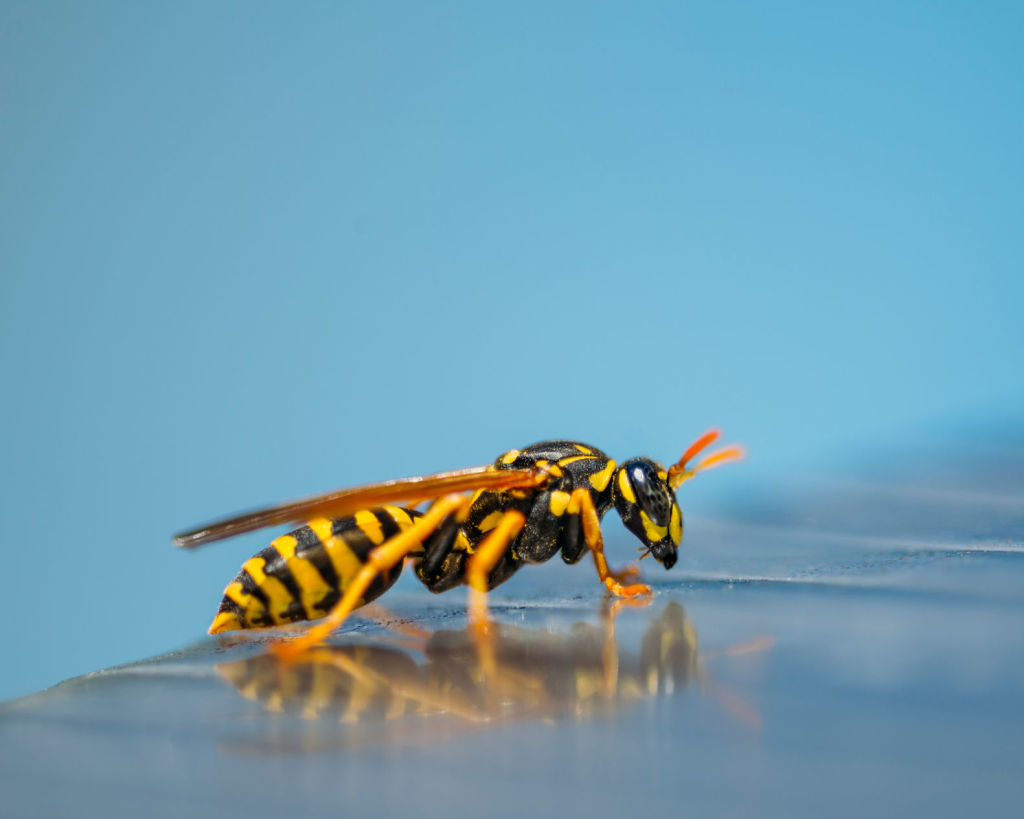The insects you're attracting into your kitchen - and how to keep them out

I used to have a terrible ant problem in the spring and summer.
I’d often find their little hills in our backyard, or open the back door to find a long line of the industrious little critters marching up to the house from the garden. On one awkward occasion, a stream of the things invited themselves to a morning tea I was holding. They marched all the way up the kitchen wall as I watched, helpless, hoping my guests wouldn’t notice.
We used a heavy duty bottle of ant killer to deal with them that time – I still feel guilty about it. But as with most kitchen insect pests, there are some less toxic things to try before you reach for the raid.
Listen to Dolly’s story of tiny house living on Somewhere Else:
So here’s a list of the pests you might be attracting to your kitchen and how to deal with them safely:
Flies
Warmer weather had us all reaching for the fly spray in 2018, as a “plague of flies” infested the nation. This year is likely to be the same as temperatures increase.

Making sure your food is stored correctly in the fridge or a cool, dry pantry or cupboard, that your compost and rubbish are kept covered and your food preparation areas are clean, is a good start for controlling fly numbers.
Today in News You Didn’t Want To Know, however: Cluster flies are possibly in your home already, hibernating in your attic. It is advisable to spray or bug-bomb your attic during the winter, when the horrid things are dormant – and then trying not to spend the spring and summer imagining the piles of cluster fly bodies heaped over your head.
A household advice site says the best way to avoid the fly-pocalypse is to prevent them getting in in the first place by sealing your attic with fly mesh and silicone. Growing herbs like lavender, mint and basil can help. I grow holy basil around my house for this reason.
If they are still getting to you, you could grab a plastic fly swatter for about $2, but a rolled up newspaper works just as well. Pyrethrum sprays will work too, but are poisonous to bees. You could also try a natural bug repellent made from citronella.
Ants
As the weather warms up, so too do the ants. Spring and summer are their peak foraging time. It’s best to prevent them coming into the house in the first place, so you don’t have to eradicate them later.
They’re attracted by food, so keeping your kitchen scrupulously clean, and keeping all food covered – especially sugar, jam and honey – will help. There are numerous commercial products for dealing with ants, but you probably already have a pantry full of natural alternatives you can try before resorting to poison.

How about spraying them with your homemade household cleaner: lemon juice and vinegar. It’s acidic and they hate that. The same spray will also destroy the scent trails all their buddies are following straight to your sugar bowl. Spraying window sills and doors with it can also be a deterrent.
Cockroaches
Is there anything more revolting than a cockroach in the kitchen? They stink, they spread disease, and they live for weeks after you cut off their heads. They are a real-life horror show and they’re coming to a warm, damp dark corner of a kitchen near you.
Cockroaches love dark damp filth, so keep your kitchen clean. Move the fridge and oven to clean under and behind them regularly. Keep a lid on your compost and rubbish bins to keep them out.
If you do have them, make like Nana and kill ’em with borax. Design and homes blog Hunker has a great recipe for homemade borax roach poison: mix equal parts borax and flour with a little water to make a paste. Smear it where you know they’re lurking, near the bins, down the back of the fridge or under the stove, but well away from children and pets. Refresh the paste every couple of days. New roaches will eat the dead roaches and spread the poison.
Silverfish
These little fellas are totally harmless, but they will eat the paper and glue in your books. While that means they’re more common in closets and on bookshelves, they can find a nice starchy spot to hang out under your sink – you’ll sometimes even find them in the sink.
Pest control site Fantastic Pest Control says you can make a trap for them with a glass jar, masking tape and bread. Put masking tap up the side of the jar, pop the bread inside and leave it where the silver fish hang out. They will climb up the tape to get to the bread, but won’t be able to escape up the glass sides of the jar. But then you have a jar full of silverfish you have to deal with. Ew.
Better to make like Nana again – mix equal parts borax and cornflour and dust it round under the sink (again, beware of pets and children).
Wasps

Wasps are a real pain. Unfortunately, they’re also tenacious. You’re bound to see one or two of them in the kitchen as the weather warms up, especially when barbecue weather hits and we start eating outdoors.
Natural scavengers, wasps love a bit of sweet stuff, so keep your soda, jam, honey and sugar on lockdown and your benches and tables clear. Try not to leave food uncovered too.
The problem with traps and insecticides is that they can’t tell the difference between bees and wasps, so I’m not a fan of doing anything other than smashing the wasp with a rolled up newspaper, or calling in the professionals if you find a nest.
Pantry Moths
These guys usually find their way into a pantry or cupboard where food has been stored incorrectly. You will know they’ve been chowing down on your dry goods by their webbing – fluffy bubbles of stuff dotted with tiny yellow-white egg cases, larvae that look like skinny maggots, or by spotting the moths themselves: thin, mottled brown moths, about 1cm long with pointy noses.
The larvae will eat though paper and plastic to get at the starchy grains they like feeding on. The best prevention is glass jars and containers for oats, flour, pasta and rice.
If the yucky things do get in, Apartment Therapy’s Emily Han says clearing out any food you think has been infested and wiping the cupboard or pantry down with vinegar and an acidic essential oil, like tee tree, citronella or peppermint, will deter them from coming back. She also advises hanging fresh bay leaves in the pantry to deter the moths.
These methods also work to deter or repel weevils and spider and biscuit beetles – although their larvae often comes in with the flour or grain when you buy them.
- This story originally appeared on stuff.co.nz
We recommend
We thought you might like
States
Capital Cities
Capital Cities - Rentals
Popular Areas
Allhomes
More










